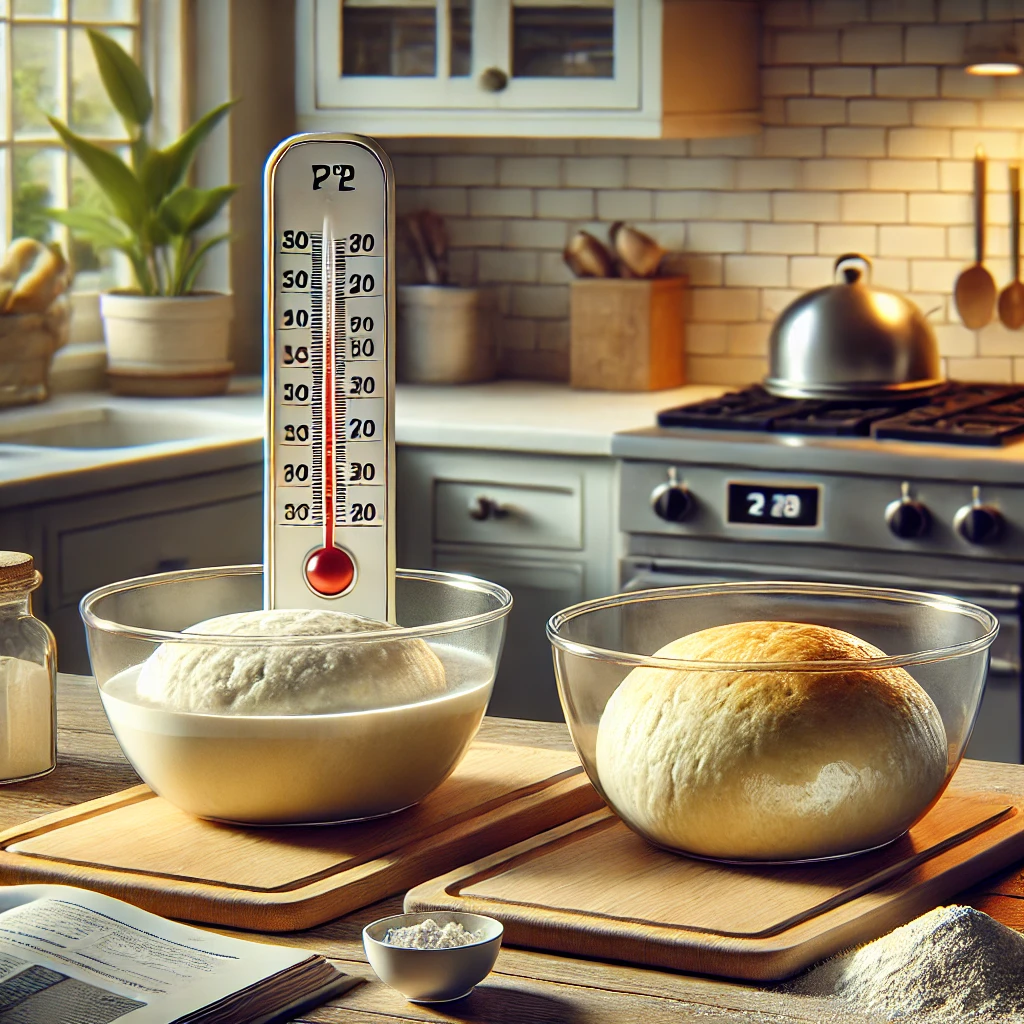Room temperature plays a crucial role in bread baking. It directly affects how quickly or slowly your dough ferments, how flavors develop, and how well your final loaf turns out. Even a difference of just a few degrees can change your entire baking timeline.
Whether you bake with commercial yeast or sourdough starter, understanding and managing the temperature of your kitchen can help you gain more control and consistency in your bread results.
In this article, we’ll explore how room temperature impacts fermentation, how to adjust your techniques for different seasons, and tools and tricks to work with your environment—not against it.
1. Why Temperature Matters in Bread Making
Fermentation is a biological process. Yeast and bacteria feed on the sugars in flour and release carbon dioxide and acids. Temperature regulates their activity:
- Warm environments (75–85°F / 24–29°C): Faster fermentation
- Cool environments (60–70°F / 16–21°C): Slower fermentation
- Too warm (above 90°F / 32°C): Risk of overproofing or yeast dying
- Too cool (below 60°F / 15°C): Fermentation may stall or be very slow
Bread dough ferments best in a mildly warm environment. But what if your kitchen doesn’t cooperate?
2. How to Measure Room Temperature
Don’t guess—use a thermometer to know your kitchen’s actual temperature.
Types of thermometers to use:
- Wall-mounted room thermometers
- Digital hygrometers with temperature display
- Infrared thermometers (for surfaces and dough)
Keep one near where your dough rests to monitor conditions over time. This helps you predict how long your bread needs to ferment.
3. Cold Room? Here’s What to Do
In winter or cooler climates, your kitchen might sit below ideal proofing temperature. Cold dough:
- Ferments slower
- Develops better flavor (thanks to lactic acid buildup)
- May need more stretch-and-folds or longer rest time
Solutions:
- Use your oven (turned off) with the light on as a makeshift proofing box.
- Place the bowl on top of the fridge or near a warm appliance.
- Wrap the dough in a towel or place it in an insulated cooler with a warm rice pack or bottle of hot water.
- Let dough ferment overnight at room temperature if you’re not in a hurry.
4. Warm Room? Here’s What to Watch Out For
Hot kitchens can make your dough ferment too quickly. This often leads to:
- Overproofed dough that collapses
- Less flavor complexity
- Weak gluten structure
What to do:
- Use less yeast to slow things down.
- Chill your water before mixing.
- Shorten bulk fermentation and final proof times.
- Move the dough to a cooler room or refrigerate part of the time.
5. How Temperature Affects Flavor and Texture
Temperature isn’t just about speed—it changes your bread’s taste and feel.
Cool fermentation:
- More complex flavor
- Open, airy crumb
- Chewier texture
- Great for sourdough and rustic loaves
Warm fermentation:
- Milder flavor
- Softer, tighter crumb
- Quicker turnaround
Depending on the bread style you want, you can manipulate temperature to match the desired result.
6. Use Cold Fermentation to Your Advantage
Cold fermentation (in the fridge) slows yeast activity and enhances flavor, especially with sourdough.
How to do it:
- Place dough in the fridge after bulk fermentation or shaping.
- Let it rest overnight (8–24 hours).
- Bake straight from the fridge or let warm slightly at room temp.
Cold dough is also easier to score and shape. It’s perfect for scheduling around your day.
7. Track and Adjust with a Baking Log
If your baking times vary from week to week, temperature may be the cause. Keep a simple log of:
- Time of day
- Room temperature
- Dough temperature
- Bulk and proofing duration
- Final result
Over time, you’ll learn how your kitchen behaves throughout the year—and how to adjust accordingly.
8. Bonus Tips for Managing Room Temperature
- Use a fermentation box or bread proofer for perfect conditions.
- Cover dough tightly to retain warmth if your kitchen is drafty.
- For consistent dough temperature, aim for 75°F (24°C) post-mixing by adjusting water temp accordingly.
Water temperature formula:
Desired dough temp × 3 – (flour temp + room temp + friction factor) = water temp
This is useful for precision bakers.
Final Thoughts
Your kitchen’s temperature can either work with you or challenge you—but it’s always manageable. With a little awareness and a few smart techniques, you can keep fermentation on track and create consistently delicious bread, no matter the season.
Remember: the yeast doesn’t care about your clock. It follows the climate. When you learn to tune into that rhythm, your baking becomes both more intuitive and more rewarding.
